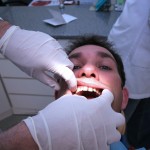
Oral erythroplakia is one a group of oral potentially malignant disorders (OPMDs) that also include oral leukoplakia, oral submucous fibrosis, oral lichen planus, and actinic cheilitis . Oral erythroplakia is considered to have the highest risk of malignant change of any of the OPMDs but having one of the lowest prevalence of the OPMDs at 0.17% (95% CI = 0.07-0.32%)
The aim of this review was to estimate the malignant development rate of oral erythroplakia and identify the associated risk factors.
Methods
A protocol was registered in the PROSPERO database. Searches were conducted n the Medline/PubMed, Embase, Scopus, Web of Science, WHO regional bibliographic LILACS, and the Conference Proceedings Citation Index databases. Longitudinal observational studies assessing malignant development in oral erythroplakia published in English were considered. Two reviewers independently screened and selected studies and extracted data. Risk of bias was assessed using the Risk of bias the Quality in Prognosis Studies(QUIPS tool). Malignant development rate was calculated, and data pooled.
Results
- 10 studies with a total of 441 (336 male, 90 female) patients were included
- There were 2 studies from Brazil, Denmark, Taiwan and the USA and one each from China and Thailand.
- 7 studies were considered to be at low risk of bias and 3 at high risk.
- Only 5 studies indicated the follow-up times for patients.
- The mean malignant development rate was 12.7% (range 0% to 50%) with a mean follow up 6.66 years.
- Meta-analysis (3 studies, 237 patients) found a malignant development rate = 19.9% (95%CI; -1.6% to 41.4%)
- A secondary analysis (9 studies, 259 patients) of the malignant development rate based on initial histopathological data is shown in table below
| Initial histopathological diagnosis | Malignant development rate (95%CI) |
| Squamous cell carcinoma. | 41.2% (16.8 to 65.5) |
| High risk epithelial dysplasia | 9.17% (29.8 to 51.4) |
| Low risk epithelial dysplasia | 37.4% (20.9 to 53.9) |
| No epithelial dysplasia | 7.19% (2.0 to 12.4) |
Conclusions
The authors concluded: –
..overall malignant development(MD) rate of oral erythroplakia in this study was 19.9%, significantly lower than previously reported. We were unable to associate this MD with any specific clinicopathological feature, including epithelial dysplasia (ED). Nevertheless, we believe the presence of ED in the initial diagnostic biopsy remains the main prognostic factor in this OPMD. Further observational studies are needed, with well-established diagnostic criteria and good clinical follow-up, in order to identify the true risk of MD of oral erythroplakia and its related factors.
Comments
The review protocol was registered with PROSPERO. Searches were conducted in a number of databases although the restriction to English language article means that some relevant studies may have been excluded. Ten studies met the authors inclusion criteria although 5 of the studies did not report on follow up times. Three similar studies provided data for a meta-analysis that provided a estimated malignant development rate = 19.9% (95%CI; -1.6% to 41.4%). It is of interest to note data was available for the initial histopathological diagnosis for 250 of the 441 patients included in the review and of these 107 (42.8%) were initially diagnosed as having squamous cell carcinoma. Only a limited number of studies involving a small number were available and as the authors highlight there is a lack of standardisation of the diagnostic criteria for oral erythroplakia and thy have also changes over the years. Additional high quality prospective observational studies are needed using common diagnostic criteria and good follow up to provide better evidence to support preventive and treatment of oral erythroplakia.
Links
Primary Paper
Lorenzo-Pouso AI, Lafuente-Ibáñez de Mendoza I, Pérez-Sayáns M, Pérez-Jardón A, Chamorro-Petronacci CM, Blanco-Carrión A, Aguirre-Urízar JM. Critical update, systematic review, and meta-analysis of oral erythroplakia as an oral potentially malignant disorder. J Oral Pathol Med. 2022 Aug;51(7):585-593. doi: 10.1111/jop.13304. Epub 2022 May 12. PMID: 35488780.
Other references
Dental Elf – 12th Jan 2022
Early detection of oral cancer and oral potentially malignant disorders
Dental Elf – 25th Jun 2021
Malignant transformation rates in oral potentially malignant disorders
Dental Elf – 8th Aug 2018
Dental Elf – 26th Jul 2011
Malignant transformation rates in oral potentially malignant disorders
